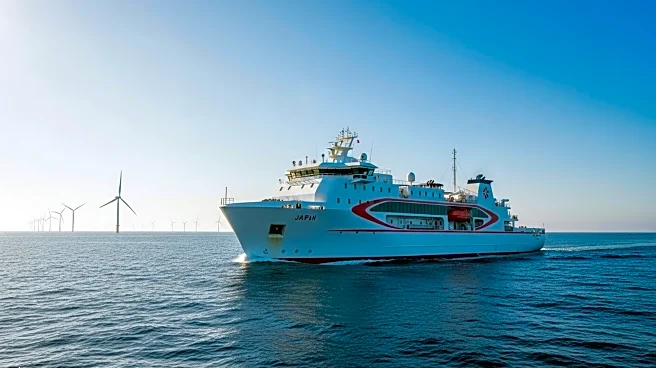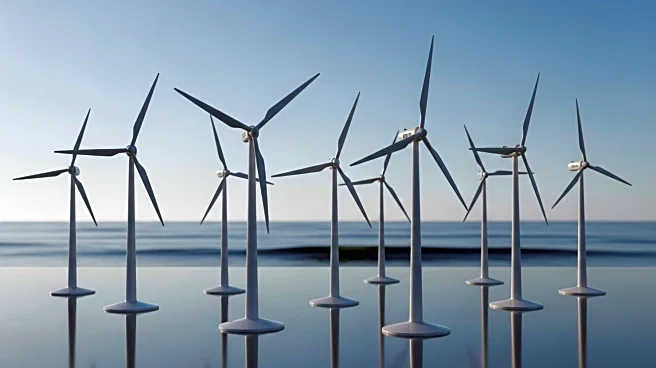What's Happening?
NYK, a major Japanese shipping company, has entered into a long-term charter agreement for a crew transfer vessel (CTV) with Oga Katagami Akita Offshore Green Energy. This joint venture includes JERA Nex bp Japan, Electric Power Development, Tohoku Electric Power, and Itochu Corporation. The vessel, measuring 28 meters, will be constructed by Kosaba Shipbuilding in Kamaishi City, Iwate Prefecture. It is designed to operate along the coasts of Oga, Katagami, and Akita, supporting Japan's first offshore wind project in general sea areas. The design is based on a model from Northern Offshore Services, a leading European CTV operator, with modifications for domestic construction. The initiative aims to bolster Japan's shipbuilding industry, create jobs, and support regional development.
Why It's Important?
This development is significant as it marks a step forward in Japan's commitment to renewable energy, particularly offshore wind power. By investing in domestically built vessels, Japan is strengthening its shipbuilding industry and enhancing its capabilities in renewable energy projects. The project is expected to contribute to a stable electricity supply in Japan, aligning with global trends towards sustainable energy solutions. The involvement of major energy companies in the joint venture underscores the strategic importance of offshore wind power in Japan's energy landscape.
What's Next?
The construction of the vessel is set to proceed, with operations expected to commence along the designated coastal areas. The project will likely attract attention from other regions considering similar renewable energy initiatives. As Japan continues to expand its offshore wind capabilities, further collaborations and investments in this sector are anticipated. The success of this project could pave the way for additional offshore wind developments, potentially influencing energy policies and industry standards.
Beyond the Headlines
The project highlights the growing importance of offshore wind energy in Japan's energy strategy. It reflects a broader shift towards sustainable energy sources, which could have long-term implications for energy security and environmental policies. The collaboration between multiple energy companies indicates a unified approach to tackling energy challenges, potentially setting a precedent for future partnerships in the renewable energy sector.











